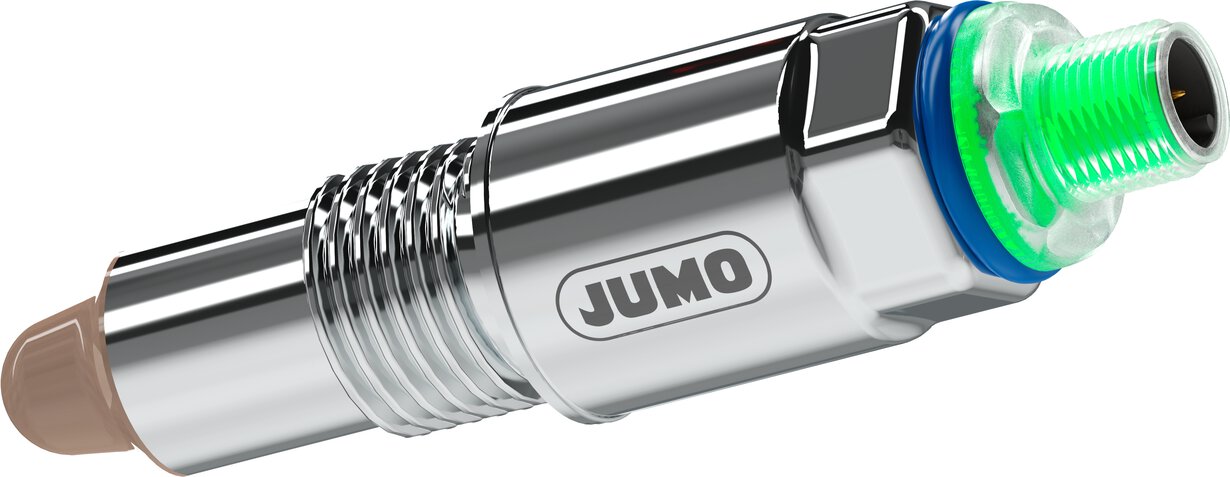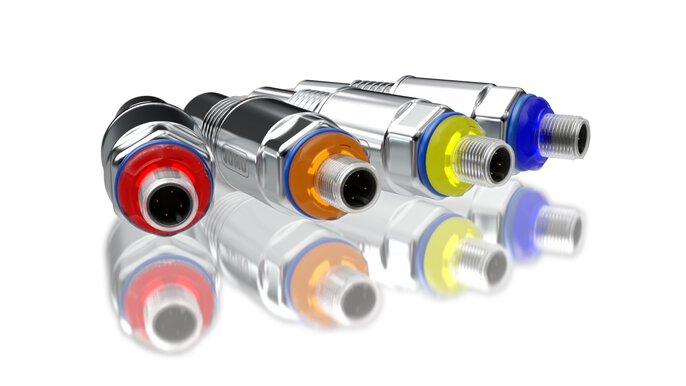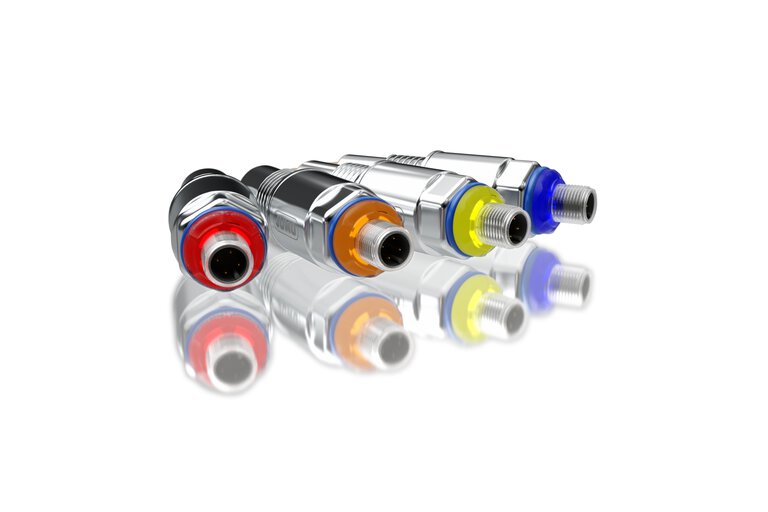

Replace your vibration level sensor with a capacitive limit level sensor! Device comparison
Level sensors play a key role in many industrial applications, serving to monitor the level of various media, from liquids to bulk materials. There are various technologies available for this purpose, and among the most common are vibration and capacitive level sensors. In our experience, in many industrial applications it is more advantageous to use a compact capacitive sensor for level measurement. In this blog post, we discuss the principles of both devices, fairly compare their advantages and disadvantages, and share tips on which technology to use for specific applications. Read on and choose the right liquid and bulk level sensor!
Capacitive Level Limit Switch
Capacitive level sensors measure the level of a medium in a tank by observing changes in capacitance. As the level of liquid or other medium in the tank increases or decreases, the capacitance changes. This sensor converts this change into a signal that displays the current level of the medium.
Applications of Capacitive Level Limit Sensors
Capacitive level sensors are commonly used in the food, chemical, agricultural, and beverage industries. Due to their accuracy and versatility, they are ideal for monitoring the level of liquids, pastes, suspensions, and bulk materials.

The JUMO ZELOS C01 (408401) capacitive level sensor has an LED that lights up in as many as 5 colors to indicate the event assigned to a particular color.
Vibrations-Füllstandssensor - Funktionsprinzip
Vibrations-Füllstandssensoren, die oft auch als Resonanzsensoren bezeichnet werden, arbeiten nach dem Prinzip, dass sie die An- oder Abwesenheit eines Mediums durch Veränderung der Schwingungen im Inneren des Sensors feststellen. Hauptbestandteil eines solchen Sensors ist ein Nockenstein oder ein anderes Vibrationselement, das Schwingungen mit einer bestimmten Frequenz erzeugt. Wenn das Medium das Vibrationselement berührt, ändert sich seine Schwingungsfrequenz. Diese Änderung wird dann erfasst und verarbeitet, um den Füllstand des Mediums zu bestimmen.
Anwendungen von Vibrations-Füllstandssensoren
Vibrations-Füllstandssensoren werden häufig in der chemischen Industrie, im Baugewerbe, in der Landwirtschaft und in der Lebensmittel- und Getränkeherstellung eingesetzt. Sie werden dort eingesetzt, wo eine genaue und zuverlässige Füllstandüberwachung von Schüttgütern, Pulvern, Granulaten oder Flüssigkeiten erforderlich ist.
Capacitive vs. Vibratory Level Sensors - Comparison
Construction and Operation:
- Capacitive level sensors work on the principle of capacitance change in response to the presence of a medium.
- Vibratory level sensors operate based on vibrations, the change of which is detected when in contact with the medium.
Applications:
- Capacitive level sensors are versatile and can be used for both liquids and solids. The JUMO ZELOS C01 capacitive level limit switches, with their Teflon measuring element, are also optimal for food applications.
- Vibratory level sensors are particularly effective in detecting solid and liquid media, even in challenging conditions such as turbulence or strong external vibrations.
Benefits:
- Capacitive level sensors are characterized by a compact design and streamlined shape. Additionally, the JUMO ZELOS C01 capacitive sensors are made of materials safe for use in the food industry and feature foam detection.
- Vibratory level sensors offer durability.
Price:
- Capacitive level sensors often have a significantly lower price compared to vibratory level sensors.
Limitations:
- Vibratory sensors may have limitations in certain applications, for example in the food industry, where there is a risk of contamination due to the possibility of material accumulation.
- Capacitive sensors may require more precise configuration in specific applications and can be sensitive to extreme environmental conditions.

Example of application of ZELOS capacitive limit level indicators in an industrial tank
Vibrating level sensor vs. capacitive boundary level sensor – summary
Capacitive level sensors are versatile and can be used for both liquids and solids. JUMO ZELOS C01 capacitive level beacons, due to their measuring tip made of PEEK material, are also optimal for food applications.
The choice between vibration and capacitive level sensors depends on the specific application and requirements. In some cases, a vibrating sensor may be a better choice due to its robustness, while in other situations a capacitive level sensor may be more suitable due to its versatility and cost advantages.
About the author
My name is Ewelina Szmit and I have been working in the field of content marketing for several years, combining my professional skills with my passion for writing. I believe that even the most technical topics can be presented in an interesting and accessible way for everyone. Outside of work, I develop my creativity by creating newspaper collages. I like to spend my free time most actively, walking my dog or running.

Technical specialist
Katarzyna Tracz - Inside Sales Engineer +48 71 339 32 86 Katarzyna.Tracz@JUMO.net +48 71 339 32 86Comments
We encourage you to leave your comments via the form below. They will be posted online after they have been approved through our review process.


